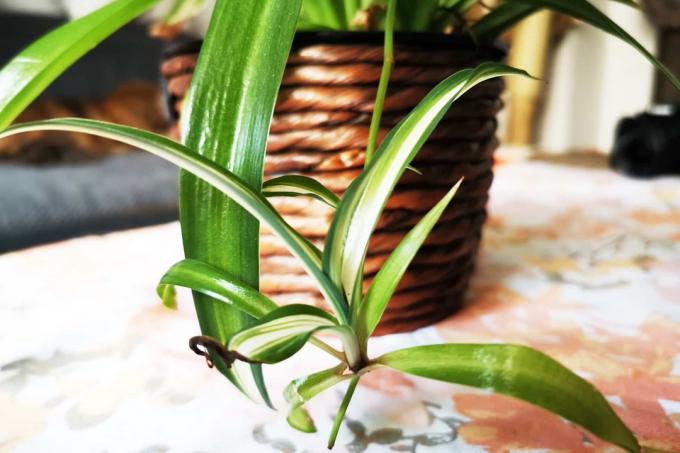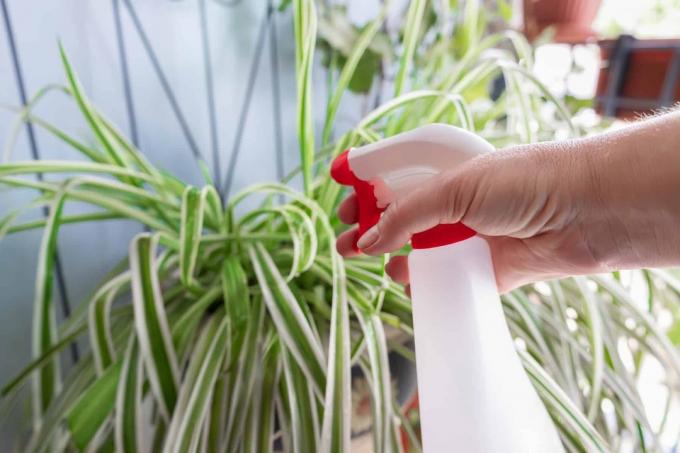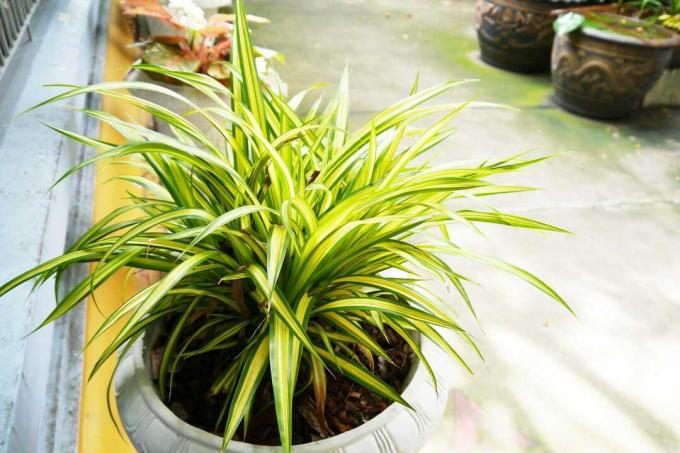
The spider plant is one of the classic indoor plants. It is undemanding and thrives – with a little attention – in the right place. But what is the ideal location for the spider plant?
In a nutshell
- Location dependent on variety
- also outdoors depending on the weather
- no direct sunlight
- use commercially available or your own substrate mixtures
Table of contents
- light and temperature
- humidity
- substrate
- outdoor location
- frequently asked Questions
light and temperature
When choosing the best location for the spider plant (Chlorophytum) it depends on the right amount of (sun)light or brightness on. How much of it is needed depends on the respective variety, because there are completely green leaves and those with light variegated leaves. You should pay attention to this:
- the more light parts of the leaf, the lighter the location
- partially shaded location for Chlorophytum orchidastrum and Chlorophytum amaniense
- partially shade-tolerant
- bright place for Chlorophytum viridescens and Chlorophytum comosum
- no direct sunlight in the midday hours
- variegated varieties turn green in the shade

The ideal temperature is around 20 degrees. Then the spider plant forms the most children (offshoot). At ten degrees or below, the plant stops growing. Even in winter, the temperature should not fall below ten degrees.
Tip: The spider plant has a special feature: it draws the toxic substance formaldehyde out of the air. It is also a reliable supplier of oxygen and humidity.
humidity
The spider plant not only provides humidity, but also needs it itself. If it's too dry, she gets it brown leaf tips. This is often the case in winter when the heating air is dry. A humidity of 70 percent and more is optimal for the spider plant at the location. To increase the humidity, the leaves should be sprayed with room-warm water once a week. The warmer the location, the more often you should mist them. Or you put them in the shower or bath from time to time and rinse them off.

A notice: Pet owners can take a deep breath: the spider plant, which is particularly popular with cats, is (with the exception of the seeds) not poisonous.
substrate
The spider plant is not very choosy when it comes to the choice of substrate. You can use commercially available potting soil or create your own substrate mixture. It should have some basic properties:
- Mixture of high-quality compost and coconut fibers
- ensures good water retention and good aeration of the roots
- Substrate mixture does not sag
- pH between 6 and 7 (slightly acidic to neutral)
- measure with test strips if necessary, correct if necessary
- pay attention to even soil moisture
A mixture could also consist of 5 parts humus substrate, 2 parts clay soil and 1 part perlite, coarse sand or lava granules. Incidentally, the spider plant also thrives well in hydroponics, provided it is cultivated that way from the start. Subsequent conversion from soil to water is not recommended.
Tip: The plant pot should not be too big, because spider plants like it a little narrower in the root area.
outdoor location

Since the spider plant is not hardy, it cannot go outside all year round. From mid-May to August/September, staying in the garden or on the balcony is not a problem, provided you place the spider plant in the right place. Before moving outdoors, a short acclimatization phase should be observed to get the plant used to the sun. Otherwise there is a risk of unsightly burns. To do this, first place them in a sheltered spot outdoors during the day and bring them back inside at night. The spider plant is only allowed to spend the night outside when the temperature no longer falls below ten degrees at night.
frequently asked Questions
Even if the spider plant prefers something narrower in the root area, it should be repotted as soon as its thick storage roots push upwards or become too dense. become visible. That's about every year or two. The new pot should only be about two fingers larger than the old one. If you can't get the plant out of the pot, watering it thoroughly beforehand can help.
Since the thick roots can store water, the spider plant can also survive short-term drought. As a rule, it is sufficient to water them moderately once or twice a week during the growth phase from around March to October. In the best case, the substrate is permanently slightly damp.
Brown tips on the spider plant can be an indication of too little humidity, dryness in the root area, but also for a location that is too sunny. Also, if the leaves hit the ground or elsewhere, the tips can turn brown.



